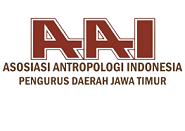Unpacking Jurassic Park Turbulence at Komodo Island: Indigenous mitigation furtherance
Downloads
Government has set protection, conservation, resource use, education, demography, and improved management system of Komodo, Rinca, and Padar Islands development forescast via detailed blueprint entitled Jurassic Park. This Scenario evokes the exoticism of three islands "erstwhile” nature, especially as the endemic great lizard (Komodo) is there. From the outset of Komodo National Park (KNP) Involuntary enhancement, it confines 33,987 ha of Komodo, 19, 625 ha of Rinca, and 1,533 ha of Padar Islands abundant and nature resources; likewise, the 2000-2025- or 25-years masterplan of KNP, within "zoning” area, ties to limit local's' subsistence (i.e., sea wood harvest, aquaculture, etc.). Begun with Public-Private Partnership/PPPs, next is Indigenous Multi-corporate Enhancement/ImcE, and Mill-coalesced Indigenous Volume/Mcol. Methods of current research unveil inefficiency in coexistence with mega venture of Jurassic Park; this research advocates indigenous' livelihood without "wasternizing” the heightens human resources, soothes internal adverse periphery and arrives at Jurassic Park renunciation nexus.
Asriyani H & Verheijen B (2020) Protecting the Mbau Komodo in Riung, Flores: Local adat, national conservation and ecotourism developments. Forest and Society 4 (1):20–34. DOI 10.24259/fs.v4i1.7465.
Antonelli, G., Risio, R. Di and Felice, G. Di (2017) New Media Education: The Contribution of Social Sciences to Training Teachers. In: A Maturo, Å HoÅ¡ková-Mayerová, DT Soitu, J Kacprzyk. Recent Trends in Social Systems: Quantitative Theories and Quantitative Models, Recent Trends in Social Systems: What Does It Mean to Trust the Health System. http://link.springer.com/10.1007/978-3-319-40585-8.
Berg JC (2015) Democracy disrupted: The Politics of global protest. New Political Science 37 (1):149–152. DOI 10.1080/07393148.2014.995397.
Borzaga C & Bodini R (2014) What to make of social innovation? Towards a framework for policy development. Social Policy and Society 13 (3):411–421. DOI 10.1017/S1474746414000116.
Büscher B (2013) Transforming the Frontier: Peace Parks and the Politics of Neoliberal Conservation in Southern Africa. Duke University Press. DOI 10.2307/j.ctv11smm5t.
Bush E & Lemmen DS (eds) (2019) Canada's Changing Climate Report. Ottawa: Government of Canada. ISBN: 978-0-660-30222-5. https://publications.gc.ca/collections/collection_2019/eccc/En4-368-2019-eng.pdf.
Christophersen A (2015) Performing towns. Steps towards an understanding of medieval urban communities as social practice. Archaeological Dialogues 22 (2):109–132. DOI 10.1017/S1380203815000161.
Cochrane J (2013) Exit the dragon? Collapse of co-management at Komodo National Park, Indonesia. Tourism Recreation Research 38 (2):127–143. DOI 10.1080/02508281.2013.11081740.
Collins WA & Gunnar MR (1990) Social and personality development. Annu Rev Psychol 41:387-416. DOI 10.1146/annurev.ps.41.020190.002131.
Cook IG, Halsall JP, & Wankhade P (2015) Sociability, Social Capital, and Community Development: A Public Health Perspective. America: Springer.
Erdmann AM (2004) A Natural History Guide to Komodo National Park. In: AM Erdmann (ed). Book 1 : Terrestrial. The Nature Convervancy & Indonesia Coastal and Marine Program. https://pdf.usaid.gov/pdf_docs/PNADH657.pdf.
Gabur MFA & Sukana M (2020) Manajemen pariwisata di Pulau Padar, Taman Nasional Komodo, Labuan Bajo. Jurnal Destinasi Pariwisata 8 (2):336. DOI 10.24843/jdepar.2020.v08.i02.p23.
Hatzold ME (2013) Social conflict, economic development and extractive industry: Evidence from South America. Community Development Journal 48 (3):501–505. DOI 10.1093/cdj/bst026.
Holmes G (2015) Markets, Nature, Neoliberalism, and conservation through private protected areas in southern Chile. Environment and Planning A 47 (4):850-866. DOI 10.1068/a140194p.
Howkins A, Orsi J, Fiege M (2019) National Parks beyond the Nation: Global Perspectives on ‘America's Best Idea'. Journal of the Illinois State Historical Society (1998-) 112 (1):107-109. https://doi.org/10.5406/jillistathistsoc.112.1.0107.
Husen AA, Purwandana D, Nasu SA, Kamil PI, & Azmi M (2018) Komodo Dragon conservation project: Flores programme-2018 Report. http://www.lafermetropicale.com/documents/Komodo_Survival_Program.pdf.
IUCN World Heritage Outlook (2020) Gunung Mulu National Park - 2020 Conservation Outlook Assessment. 2020 Conservation Outlook, 17. https://worldheritageoutlook.iucn.org/node/1103/pdf?year=2020.
Kaltenborn M (2015) Social Rights and International Development - Global Legal Standards for the Post-2015 Development Agenda. Berlin, Heidelberg: Springer.
Keet A (2015) It is time: Critical human rights education in an age of counter-hegemonic distrust. Education as Change 19 (3):46–64. https://doi.org/10.1080/16823206.2015.1085621.
Kodir A, Tanjung A, Sumarmi, Ahmad R, & Simanjuntak TB (2019) Tourism governance in komodo national park, Indonesia: Blessing or curse?. Geojournal of Tourism and Geosites 27 (4):1401–1417. DOI 10.30892/gtg.27424-443.
Larsen KM (2014) The Oxford Handbook of International Human Rights Law. Nordic Journal of Human Rights 32 (3):280–282. DOI 10.1080/18918131.2014.937220.
Moscovici S, Jovchelovitch S, & Wagoner B (2013) Development as a social process: Contributions of Gerard Duveen. London, Routledge. DOI 10.4324/9780203387979.
OECD/ILO (2011) Job-rich Growth in Asia: Strategies for Local Employment, Skills Development and Social Protection. [Accessed 2021]. http://www.oecd-ilibrary.org/employment/job-rich-growth-in-asia_9789264110984-en.
Ojeda D (2012) Green pretexts: Ecotourism, neoliberal conservation and land grabbing in Tayrona National Natural Park, Colombia. The Journal of Peasant Studies 39 (2):357–375. DOI 10.1080/03066150.2012.658777.
Pet J & Yeager C (eds) (2000) 25 year master plan for management komodo national park: Book 1 management Plan. [Accessed 2021]. https://rmportal.net/library/content/nric/3186.pdf/view.
Petriello MA, Redmore L, Harper AS, & Katju D (2021) Terms of empowerment: Of conservation or communities?. Oryx 55 (2):255–261. DOI 10.1017/S0030605319000036.
Rahman DF & Afioma G (2016) The designation of komodo national park world heritage site : to whom does it benefit ?. Furnace (5):32–41.
Rea CM (2015) Commodifying Conservation. Contexts 14 (1):72–73. DOI 10.1177/1536504214567862.
Singh P (2015) Subnationalism and social development: A comparative analysis of Indian States. World Politics 67 (3):506–562. DOI 10.1017/S0043887115000131.
Suraji, Hasan S, Suharyanto, Yonvitner, Koeshendrajana S, Prasetiyo DE, Widianto A, & Dermawan A (2020) Nilai Penting Dan Strategis Nasional Rencana Zonasi Kawasan Taman Nasional Komodo. Jurnal Sosial Ekonomi Kelautan dan Perikanan 15 (1):15-32. DOI 10.15578/jsekp.v1i1.8888.
Tati, Rusdiana D, Doni, & Nugraha S (2021) Identifikasi Pelanggaran AMDAL Mega Proyek Wisata Pulau Komodo Nusa Tenggara Timur. Jurnal Identitas 1:42–52.
Wijaya C & Henschke R (2020) Haruskah komodo dipisahkan dari manusia?. [Accessed 2021]. https://www.bbc.com/indonesia/extra/m3oHVdWQZQ/komodo_dragon_indonesian.
Zembylas M & Keet A (2019) Critical Human Rights Education: Advancing Social-Justice-Oriented Educational Praxes. In: Contemporary Philosophies and Theories In Education. http://www.springer.com/series/8638.
Copyright (c) 2022 Indonesian Journal of Social Sciences

This work is licensed under a Creative Commons Attribution-NonCommercial-ShareAlike 4.0 International License.
1. The authors agree to transfer the transfer copyright of the article to the Indonesian Journal of Social Sciences effective if and when the paper is accepted for publication. The authors can download the Copyright Transfer Agreement here.
2. The legal formal aspect of journal publication accessibility refers to Creative Commons Attribution-NonCommercial-ShareAlike 4.0 International License (CC BY-NC-SA).
3. Every publication (printed/electronic) is open access for educational purposes, research, and library. Other than the aims mentioned above, the editorial board is not responsible for copyright violation.

IJSS by Unair is licensed under a Creative Commons Attribution-NonCommercial-ShareAlike 4.0 International License.




















